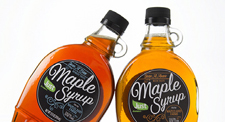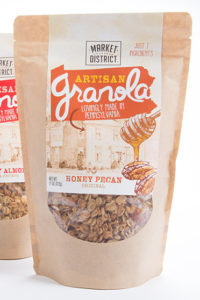 Matching the Consumer Mindset
Matching the Consumer Mindset
For many years, large national brands have been consumers’ go-to items. The brand names and logos are well-known, and their marketing messages have one simple goal: encourage consumers to remain loyal. But over the last decade, the tide has turned. Consumers expect more from a brand than a recognizable name and marketing hype. They want authenticity—products that are real and reflect their values, culture and beliefs.
Authenticity isn’t a new concept, says Lee Gobbi, Creative Director of Branding for Daymon. “It grew out of the health and naturals channels in the 1980s and 1990s. From a grocery perspective, organics were really the first mainstream example of how authenticity was perceived and believed in. Organic products started popping up in smaller specialty stores and health food sections in the 1990s. By the early to mid-2000s, they were everywhere.”
Today, consumers’ demand for authenticity extends well beyond organic. “There are two key elements that consumers are looking for when it comes to authenticity: 1) does the product reflect me and speak my language; and 2) is it good for me in some way—whether that’s healthy or local or sustainable,” Gobbi explains.
Retailers and brands have multiple avenues through which they can drive authenticity in these ways—not just through the development of the product itself, but also through the packaging and branding, says Gobbi. “Without a doubt, the packaging, right down to what it’s made of, can send a message of authenticity. For example, the structure of packaging is moving to sustainable, recyclable and more efficient—telling the consumer ‘we care about what you care about.’”
The package design can also help tell a story of authenticity. “When we’re designing packaging for clients, we help drive authenticity through a combination of graphics, white space and typography,” explains Gobbi. “For example, most people associate a lot of white space with being clean and real and authentic. It doesn’t even have to be white—it can be earthy tones like a pale sage green.
 “Also, rather than showing a staged photo of the final product, we try to find other ways creatively to communicate a more honest, authentic message—like hand-drawn illustration,” Gobbi continues. “So instead of having a pasta sauce jar with a photo of spaghetti and sauce on the front, we’ll create a hand-drawn design that shows fresh tomatoes and herbs and spices. This conveys the feeling that a product is fresh, wholesome and healthy. Typefaces that look like they’re handwritten also help create a more authentic feel—as if the product was made and labeled right there in the store.”
“Also, rather than showing a staged photo of the final product, we try to find other ways creatively to communicate a more honest, authentic message—like hand-drawn illustration,” Gobbi continues. “So instead of having a pasta sauce jar with a photo of spaghetti and sauce on the front, we’ll create a hand-drawn design that shows fresh tomatoes and herbs and spices. This conveys the feeling that a product is fresh, wholesome and healthy. Typefaces that look like they’re handwritten also help create a more authentic feel—as if the product was made and labeled right there in the store.”
Another strategy that can help drive authenticity is telling the story of the product, says Gobbi. “We know customers are going to pick up the package and read the label. Having a few lines about where the product comes from or what its history is can help further that feeling of personality and authenticity.” Appealing to consumers’ origins—their hometown, culture or ethnicity, for example—can also help create a sense of authenticity. “It’s really about creating a consumer mindset,” Gobbi explains.
While on the surface this may seem like just another trend, Gobbi asserts it’s not a passing fad. “Authenticity is here to stay,” he says. “The way that we message and market products might change, but retailers and brands, both large and small, are going to have to get more used to delivering healthier and more multicultural options and driving the sale of products from a local and global perspective.”
To learn more about Daymon’s branding and package design services, contact Lee Gobbi, Creative Director—Branding at lgobbi@daymon.com.

